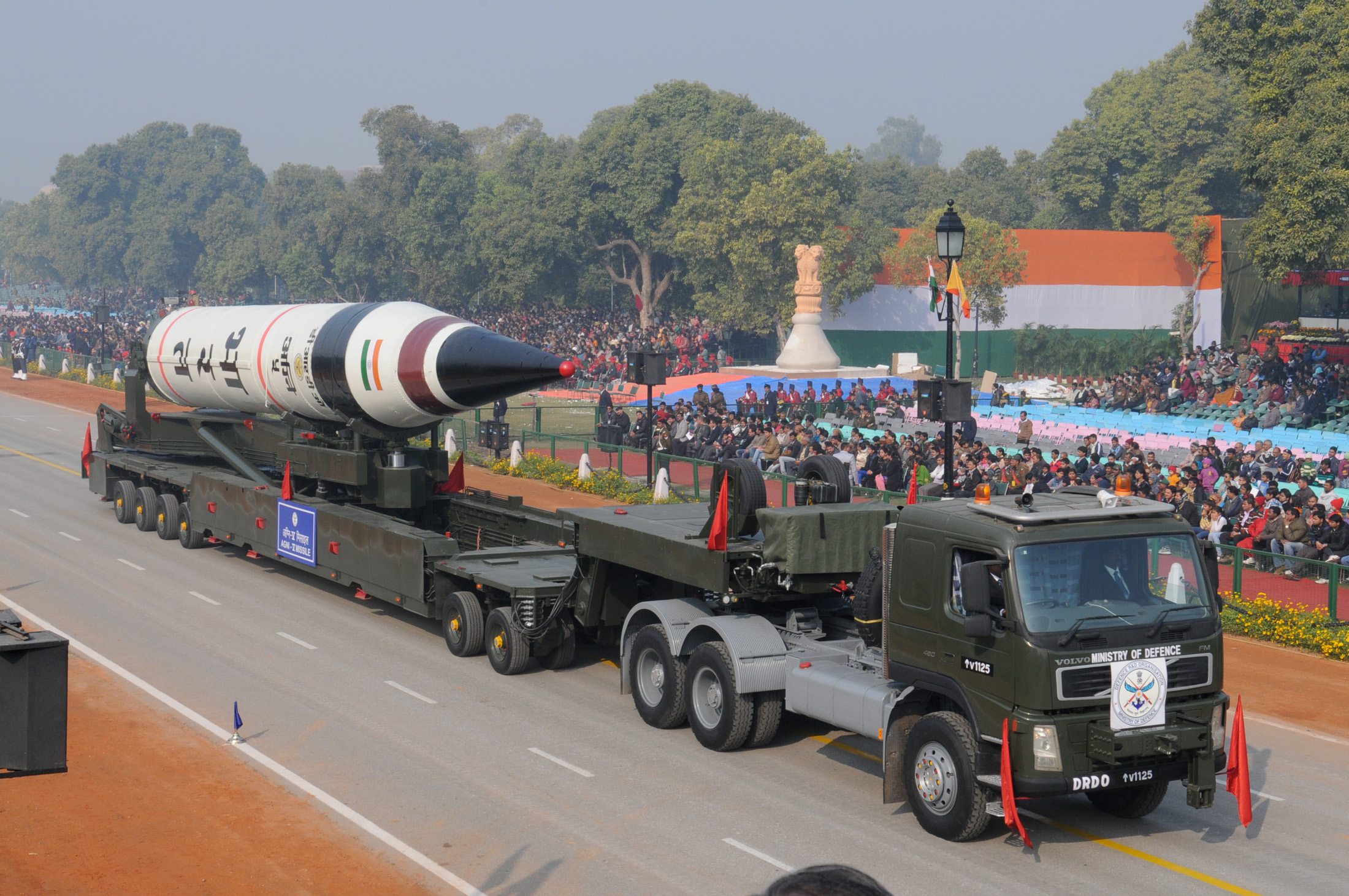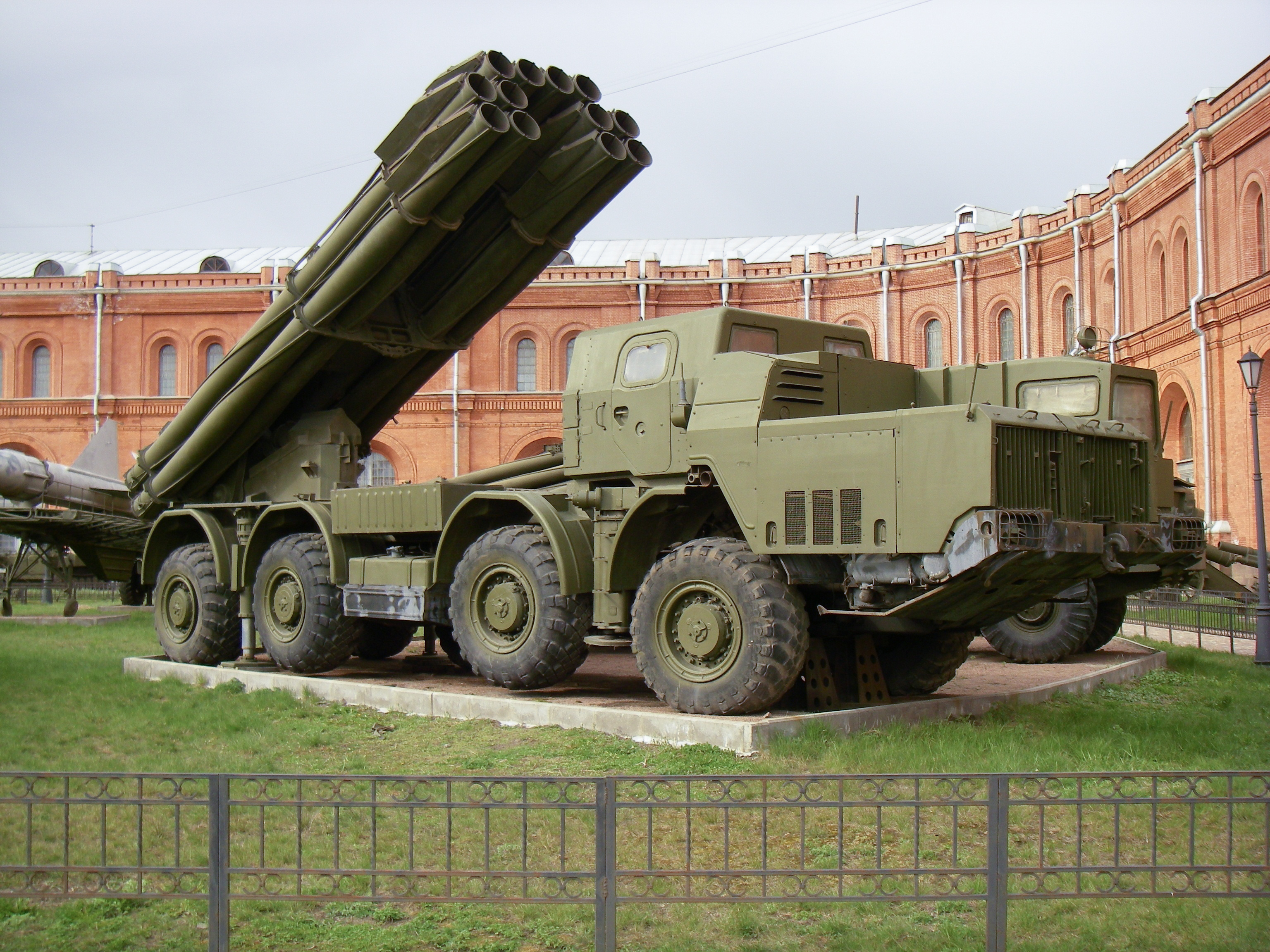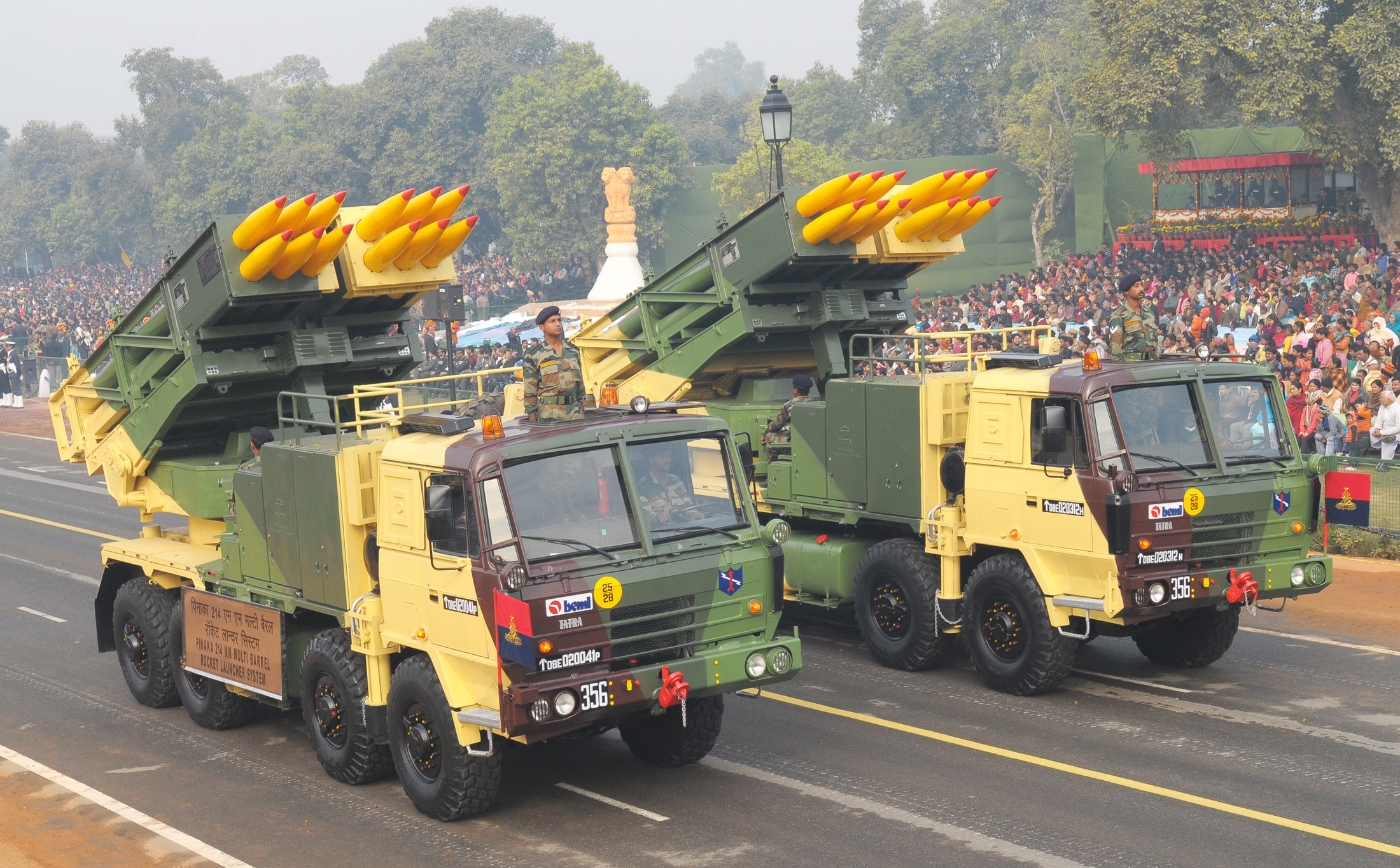|
Prahaar (missile)
Prahaar ("Strike") is an Indian solid-fuel rocket, solid-fuel road-mobile tactical ballistic missile developed by the Defence Research and Development Organisation (DRDO). Prahaar is expected to replace the Prithvi-I SRBM , short-range ballistic missile in Indian service. Development Prahaar is developed to provide a cost-effective, quick-reaction, all-weather, all-terrain, highly accurate battlefield support tactical weapon system. The development of the missile was carried out by the DRDO scientists in a span of less than two years. The maneuvering capability, greater acceleration, better accuracy and faster deployment fills the short-range tactical battlefield role as required by the Indian Army to take out strategic and tactical targets. The mobile launch platform will carry six missiles that can be deployed in stand-alone and canisterised mode, which can have different kind of warheads meant for different targets and can be fired in salvo mode in all directions covering t ... [...More Info...] [...Related Items...] OR: [Wikipedia] [Google] [Baidu] |
Tactical Ballistic Missile
A tactical ballistic missile (TBM), or battlefield range ballistic missile (BRBM), is a ballistic missile designed for short-range battlefield use. Typically, range (aeronautics), range is less than . Tactical ballistic missiles are usually mobile to ensure survivability and quick deployment, as well as carrying a variety of warheads to target enemy facilities, assembly areas, artillery, and other targets behind the front lines. Warheads can include conventional high explosive, Chemical warfare, chemical, Biological warfare, biological, or nuclear warheads. Typically tactical nuclear weapons are limited in their total yield compared to strategic rockets. Design Tactical ballistic missiles fill the gap between conventional rocket artillery and longer-range short-range ballistic missiles. Tactical missiles can carry heavy payloads deep behind enemy lines in comparison to rockets or gun artillery, while having better mobility and less expense than the more strategic theatre mi ... [...More Info...] [...Related Items...] OR: [Wikipedia] [Google] [Baidu] |
Transporter Erector Launcher
A transporter erector launcher (TEL) is a missile vehicle with an integrated tractor unit that can carry, elevate to firing position and launch one or more missiles. History Such vehicles exist for both surface-to-air missiles and surface-to-surface missiles. Early on, such missiles were launched from fixed sites and had to be loaded onto trucks for transport, making them more vulnerable to attack, since once they were spotted by the enemy they could not easily be relocated, and if they were it often took hours or even days to prepare them for launch once they reached their new site. Usually a number of TELs and TELARs are linked to one command post vehicle (CP or CPV). They may use target information from target acquisition, designation and guidance radar (TADAGR or TAR). Transporter erector launcher and radar A transporter erector launcher and radar (TELAR) is a type of TEL that also incorporates part or all of the radar system necessary for firing the surface-to-air missil ... [...More Info...] [...Related Items...] OR: [Wikipedia] [Google] [Baidu] |
IGMDP
The Integrated Guided Missile Development Programme (IGMDP) was an Indian Ministry of Defence programme for the research and development of the comprehensive range of missiles. The programme was managed by the Defence Research and Development Organisation (DRDO) and Ordnance Factories Board in partnership with other Indian government political organisations. The project started in 1982–83 under the leadership of Abdul Kalam who oversaw its ending in 2008 after these strategic missiles were successfully developed. On 8 January 2008, the DRDO formally announced the successful rated guided missile programme was completed with its design objectives achieved since most of the missiles in the programme had been developed and inducted by the Indian armed forces. History By the start of the 1980s, the DRDL had developed competence and expertise in the fields of propulsion, navigation and manufacture of aerospace materials based on the Soviet rocketry technologies. Thus, India's ... [...More Info...] [...Related Items...] OR: [Wikipedia] [Google] [Baidu] |
Missile Technology Control Regime
The Missile Technology Control Regime (MTCR) is a multilateral export control regime. It is an informal political understanding among 35 member states that seek to limit the proliferation of missiles and missile technology. The regime was formed in 1987 by the G-7 industrialized countries. The MTCR seeks to limit the risks of proliferation of weapons of mass destruction (WMD) by controlling exports of goods and technologies that could make a contribution to delivery systems (other than manned aircraft) for such weapons. In this context, the MTCR places particular focus on rockets and unmanned aerial vehicles capable of delivering a payload of at least to a range of at least and on equipment, software, and technology for such systems. The MTCR is not a treaty and does not impose any legally binding obligations on Partners (members). Rather, it is an informal political understanding among states that seek to limit the proliferation of missiles and missile technology. History Th ... [...More Info...] [...Related Items...] OR: [Wikipedia] [Google] [Baidu] |
Conventional Warfare
Conventional warfare is a form of warfare conducted by using conventional weapons and battlefield tactics between two or more states in open confrontation. The forces on each side are well-defined and fight by using weapons that target primarily the opponent's military. It is normally fought by using conventional weapons, not chemical, biological, radiological, or nuclear weapons. The general purpose of conventional warfare is to weaken or destroy the opponent's military, which negates its ability to engage in conventional warfare. In forcing capitulation, however, one or both sides may eventually resort to unconventional warfare tactics. History Formation of state The state was first advocated by Plato but found more acceptance in the consolidation of power under the Roman Catholic Church. European monarchs then gained power as the Catholic Church was stripped of temporal power and was replaced by the divine right of kings. In 1648, the powers of Europe signed the Treaty o ... [...More Info...] [...Related Items...] OR: [Wikipedia] [Google] [Baidu] |
Nasr (missile)
The Hatf IX ("Vengeance IX") or Nasr ( ur, نصر), is a solid fueled tactical ballistic missile system developed by the National Development Complex (NDC) of Pakistan. The ISPR described the system as a "Multi-tube Ballistic Missile" because the launch vehicle carries multiple missiles. Its existence was revealed after a test in 2011 and it appears to have entered service after further testing in 2013. Background According to defence analysts and missile technology experts the system appears to have been developed as a "low-yield battlefield deterrent" targeted at "mechanized forces like armed brigades and divisions." Therefore, it is believed by analysts that the system is deployed to deter and respond to India's " Cold Start" doctrine. The military ISPR maintains that the Hatf IX was developed to "add deterrence value... at shorter ranges... with high accuracy, shoot and scoot attributes" for "quick response." Pakistan confirmed that these tactical nuclear weapons a ... [...More Info...] [...Related Items...] OR: [Wikipedia] [Google] [Baidu] |
Prithvi (missile)
Prithvi (Sanskrit: ''"Earth"'') is a tactical surface-to-surface short-range ballistic missile (SRBM) developed by Defence Research and Development Organisation (DRDO) of India under the Integrated Guided Missile Development Program (IGMDP). It is deployed by India's Strategic Forces Command. Development and history The Government of India launched the Integrated Guided Missile Development Program in 1983 to achieve self-sufficiency in the development and production of wide range of ballistic missiles, surface-to-air missiles etc. Prithvi was the first missile to be developed under the program. DRDO attempted to build a surface-to-air missile under Project Devil. Variants make use of either liquid or both liquid and solid fuels. Developed as a battlefield missile, it could carry a nuclear warhead in its role as a tactical nuclear weapon. Variants The Prithvi missile project encompassed developing three variants for use by the Indian Army, Indian Air Force and the Indian ... [...More Info...] [...Related Items...] OR: [Wikipedia] [Google] [Baidu] |
BM-30 Smerch
The BM-30 ''Smerch'' ( rus, Смерч, "tornado", "whirlwind"), 9K58 Smerch or 9A52-2 Smerch-M is a heavy self-propelled 300 mm multiple rocket launcher designed in the Soviet Union. The system is intended to defeat personnel, armored, and soft targets in concentration areas, artillery batteries, command posts and ammunition depots. It was designed in the early 1980s and entered service in the Soviet Army in 1989. When first observed by the West in 1983, it received the code MRL 280mm M1983. It continues in use by Russia; a program to replace it with the 9A52-4 Tornado began in 2018. Operational history The first confirmed combat uses of the Smerch were in two war zones in 2014. Syrian military forces used the system against rebel forces during the Syrian civil war, including in fighting in Jobar. It was also used by Russia-backed militants to deliver explosive and cluster munitions to Ukrainian military positions and likewise by the Ukrainian Army. Several have be ... [...More Info...] [...Related Items...] OR: [Wikipedia] [Google] [Baidu] |
Pinaka Multi Barrel Rocket Launcher
Pinaka (from Sanskrit: पिनाक, see Pinaka) is a multiple rocket launcher produced in India and developed by the Defence Research and Development Organisation (DRDO) for the Indian Army. The system has a maximum range of 40 km for Mark-I and 60 km for Mark-I enhanced version, and can fire a salvo of 12 HE rockets in 44 seconds. The system is mounted on a Tatra truck for mobility. Pinaka saw service during the Kargil War, where it was successful in neutralising Pakistani positions on the mountain tops. It has since been inducted into the Indian Army in large numbers. As of 2014, about 5,000 missiles are being produced every year while an advanced variant is under development with enhanced range and accuracy. As of 2019, an upgraded guided missile version of the system has been test-fired, with a range of over 90 km. Development The Indian Army operates the Russian BM-21 Grad Launchers. In 1981, in response to the Indian Army's need for a long rang ... [...More Info...] [...Related Items...] OR: [Wikipedia] [Google] [Baidu] |
Indian Army
The Indian Army is the land-based branch and the largest component of the Indian Armed Forces. The President of India is the Supreme Commander of the Indian Army, and its professional head is the Chief of Army Staff (COAS), who is a four-star general. Two officers have been conferred with the rank of field marshal, a five-star rank, which is a ceremonial position of great honour. The Indian Army was formed in 1895 alongside the long established presidency armies of the East India Company, which too were absorbed into it in 1903. The princely states had their own armies, which were merged into the national army after independence. The units and regiments of the Indian Army have diverse histories and have participated in several battles and campaigns around the world, earning many battle and theatre honours before and after Independence. The primary mission of the Indian Army is to ensure national security and national unity, to defend the nation from external aggression an ... [...More Info...] [...Related Items...] OR: [Wikipedia] [Google] [Baidu] |
Prahaar Missile
Prahaar ("Strike") is an Indian solid-fuel road-mobile tactical ballistic missile developed by the Defence Research and Development Organisation (DRDO). Prahaar is expected to replace the Prithvi-I short-range ballistic missile in Indian service. Development Prahaar is developed to provide a cost-effective, quick-reaction, all-weather, all-terrain, highly accurate battlefield support tactical weapon system. The development of the missile was carried out by the DRDO scientists in a span of less than two years. The maneuvering capability, greater acceleration, better accuracy and faster deployment fills the short-range tactical battlefield role as required by the Indian Army to take out strategic and tactical targets. The mobile launch platform will carry six missiles that can be deployed in stand-alone and canisterised mode, which can have different kind of warheads meant for different targets and can be fired in salvo mode in all directions covering the entire azimuth plane. ... [...More Info...] [...Related Items...] OR: [Wikipedia] [Google] [Baidu] |
SRBM
A short-range ballistic missile (SRBM) is a ballistic missile with a range of about or less. In past and potential regional conflicts, these missiles have been and would be used because of the short distances between some countries and their relative low cost and ease of configuration. In modern terminology, SRBMs are part of the wider grouping of theatre ballistic missiles, which includes any ballistic missile with a range of less than 3,500 km. Models See also *Tactical ballistic missile *Medium-range ballistic missile (MRBM) *Intermediate-range ballistic missile (IRBM) *Intercontinental ballistic missile (ICBM) *Anti-ship ballistic missile (ASBM) *Hypersonic cruise missile A cruise missile is a guided missile used against terrestrial or naval targets that remains in the atmosphere and flies the major portion of its flight path at approximately constant speed. Cruise missiles are designed to deliver a large warhe ... References Missile types {{Mis ... [...More Info...] [...Related Items...] OR: [Wikipedia] [Google] [Baidu] |








